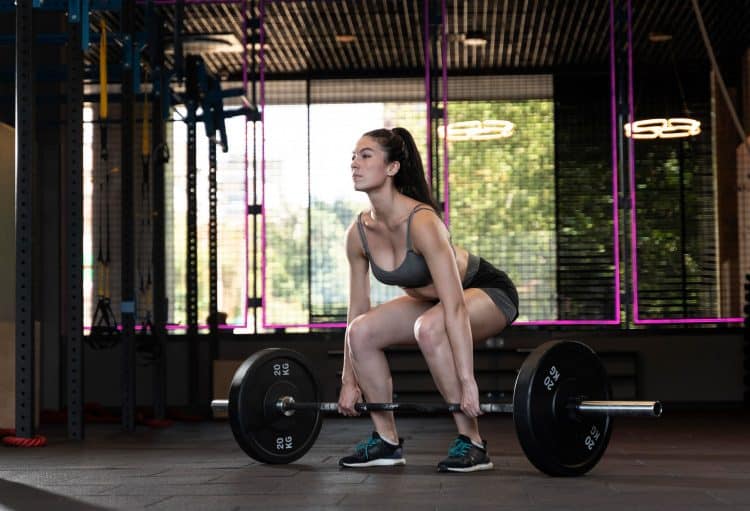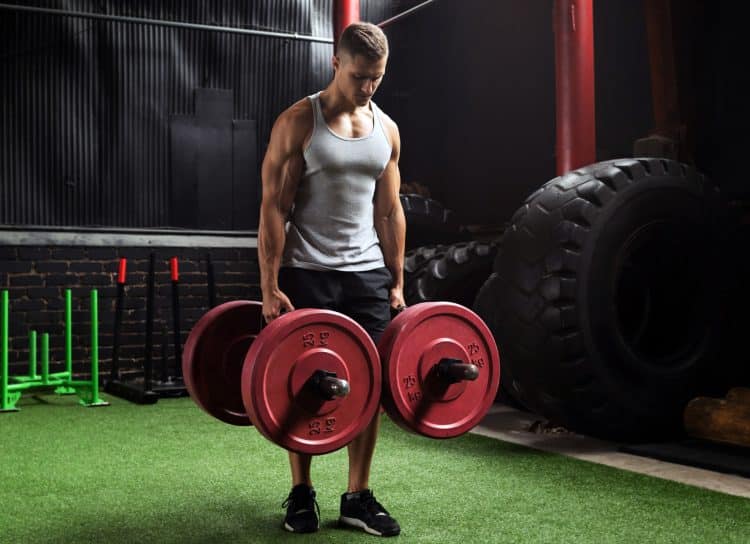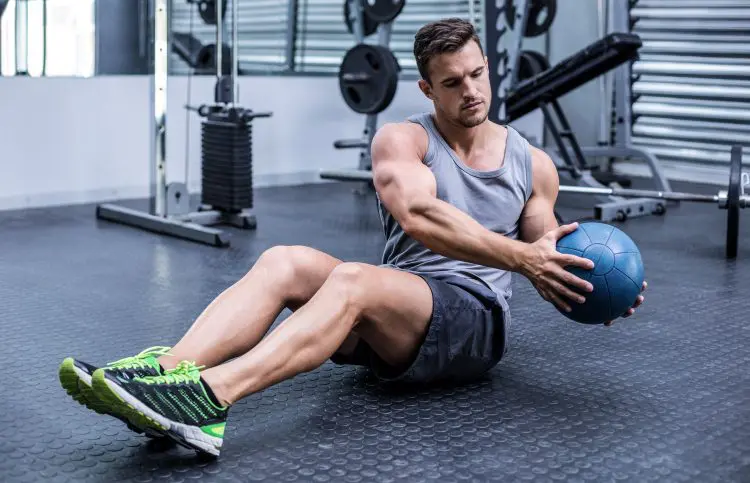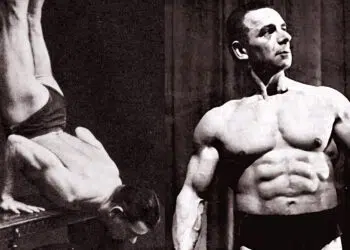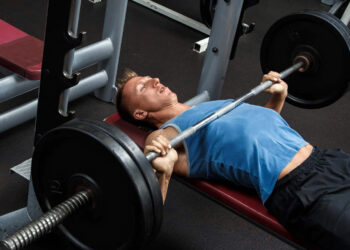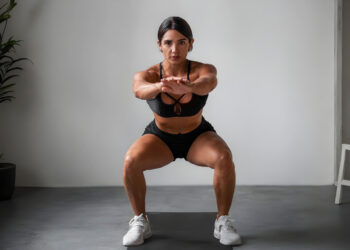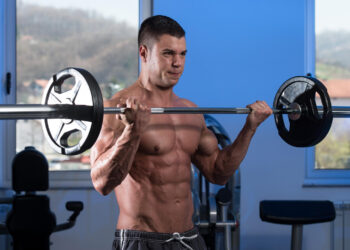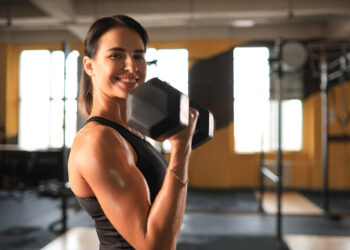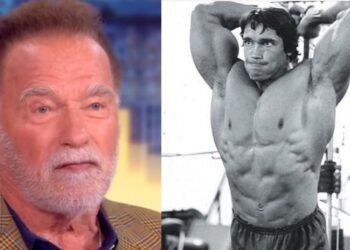I’ve always liked full-body workouts. In fact, they’ve long been my preferred way to organize my training. I know many people believe they’re only really suitable for beginners. Still, frankly, I don’t think that’s true, and my point of view is supported by science.
One such study compared the effects of full body vs. split routines in trained men. It found that full body and split routines improved strength and muscle thickness in trained men to a similar degree, despite different training frequencies – two workouts per week vs. four (1).
That’s not to say there is anything wrong with split routines. There are times when training different muscle groups on different days is very advantageous. For example, when hypertrophy is the goal. However, for many exercisers, full-body workouts offer several notable advantages and benefits. These include:
Fewer workouts per week – if you follow a full-body plan, you only need to hit the gym 2-3 times a week. This is an ideal solution for busy exercisers.
You can miss a workout and still train all your major muscles equally – skip one of your split routine workouts, e.g., your back, and your entire training week will be unbalanced. Miss a full-body workout, and all you’ve done is reduce your weekly training volume.
Burn more calories – full-body workouts burn more calories than the average split routine. That’s good news for anyone exercising for weight management or fat loss. They also tend to have a secondary cardiovascular benefit, which is not often true for split routines.
Level Up Your Fitness: Join our 💪 strong community in Fitness Volt Newsletter. Get daily inspiration, expert-backed workouts, nutrition tips, the latest in strength sports, and the support you need to reach your goals. Subscribe for free!
They replicate how your body usually works in nature – working all your major muscles in the same session is more representative of how your body works outside of the gym. Most physically demanding tasks, including sports, are full-body activities.
It’s true that most bodybuilders favor split routines, as they allow them to accumulate the volume necessary to optimize hypertrophy. However, if you aren’t a bodybuilder, you may find that full-body workouts are just as effective, or maybe even more so.
In this article, we reveal the Magnificent 7 training plan, which you can use to create perfect full-body workouts every time!
The Magnificent 7 Movement Patterns
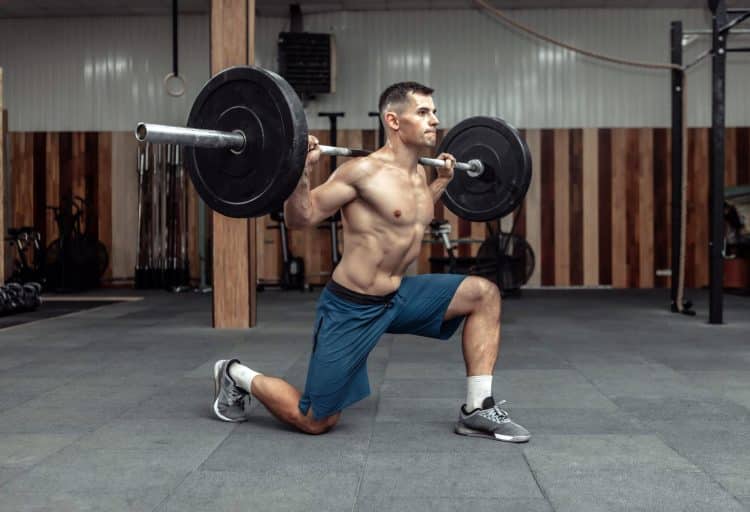
The Magnificent 7 is more than just a classic Western movie. It’s also a group of essential movement patterns popularized by strength coaches Dan John, David Whitely, and others. Between them, these movement patterns are said to cover all major human movements, and, as such, doing exercises for them will develop a functional, athletic body.
The movement patterns are:
You may be familiar with some of these movements as exercises, e.g., squats and lunges. However, as you’ll learn shortly, there are many variations of each one, which is what differentiates movement patterns from similarly named exercises.
While we could just give you a workout to follow, that only has limited short-term value. As the saying goes, give a man a fish, and he’ll eat for a day, but teach him to fish, and he’ll eat for a lifetime.
So, instead, these are the seven fundamental movements that make up this program design template so you can run with it and start creating your own training plans. Don’t worry, though; we’ve also got some sample magnificent 7 workouts for you to try!
1. Squat
Target muscles: Quadriceps, hamstrings, gluteus maximus, hip abductors, hip adductors.
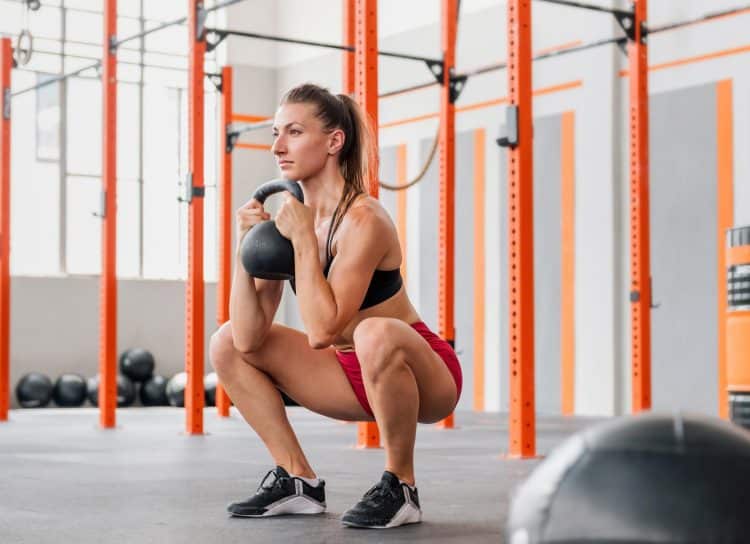
Squats are often referred to as the king of exercises, and that’s a title they deserve. The squat is the foundation of many human movements, including walking, running, and jumping. Squats should be a cornerstone of almost every workout, although there are lots of variations you can use. These include:
- Front squat
- Back squat
- Goblet squat
- Dumbbell squat
- Kang squat
- Squat jump
- Smith machine squat
- Leg press
Yes, we know what you’re thinking – leg presses aren’t squats. However, take a moment to analyze their movement pattern, and you’ll see that they share many similarities with squats, i.e., simultaneous knee and hip flexion/extension. As such, they can be counted as a squat movement pattern.
2. Upper body push
Target muscles: Pectoralis major, deltoids, triceps.
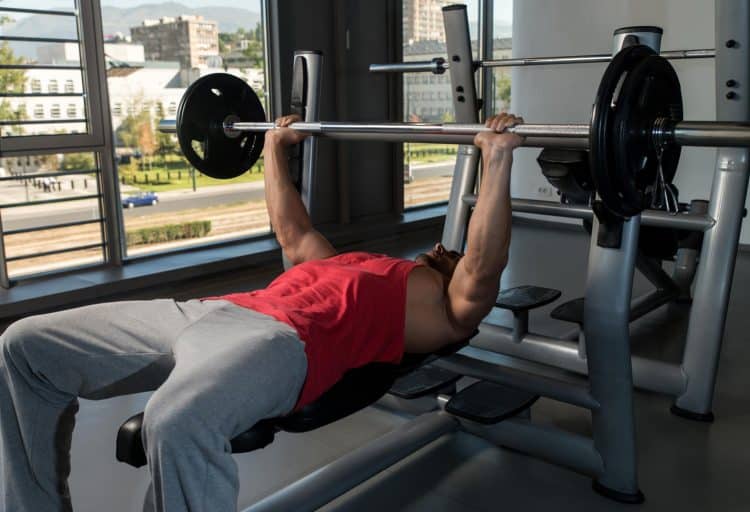
Pushing movements fall into two subcategories – horizontal and vertical/overhead. While bodybuilders tend to emphasize horizontal pressing to build their massive chests, vertical pressing is just as important, especially for developing functional strength and muscle mass.
With that in mind, your workouts should contain similar amounts of horizontal and vertical pushing exercises. This is easy to achieve by alternating between these two planes of motion, workout by workout.
Effective horizontal pushing exercises include:
- Barbell bench press (flat/incline/decline)
- Dumbbell bench press (flat/incline/decline)
- Floor press
- Push-ups
- Chest press machine
- Smith machine bench press
- Parallel bar dip
Good vertical pushing exercises include:
- Barbell shoulder press (seated/standing)
- Dumbbell shoulder press (seated/standing)
- Single-arm kettlebell press
- Alternating dumbbell press
- Pike push-up
- Handstand push-up
3. Upper body pull
Target muscles: Latissimus dorsi, trapezius, rhomboids, deltoids, biceps.

As with our upper body pushing movements, there are two subcategories of upper body pulls – horizontal and vertical. Working in both these planes will ensure you hit your essential back muscles from two angles, optimizing development and function. In bodybuilder-speak, this will give you a back that’s both thick and wide.
Effective vertical pulling exercises include:
- Lat pulldown (wide, medium, narrow, and neutral grip)
- Pull-up
- Chin-up
- Weighted pull-up/chin-up
- Assisted pull-up/chin-up
- Seated pike pull-up/chin-up
- Ring pull-up
Good horizontal pulling exercises include:
Just like the horizontal vs. vertical pushes, it’s best to alternate between the two subcategories of upper body pulls workout by workout to ensure you hit all the relevant muscles equally.
4. Hip hinge
Target muscles: Hamstrings, gluteus maximus, erector spinae.
When it comes to lower body training, most people emphasize squatting movements. That’s because they believe such exercises work the quadriceps and hamstrings equally. However, this is not the case. While the hamstrings are involved in squatting movements, they’re not as active as you might think (2).
Because of this, any functional workout must also include hip hinging. The hip hinge is a fundamental movement pattern that’s every bit as important as squatting. A good hip hinge teaches you to bend forward without straining your lower back. It also targets your hip extensors, which are the muscles responsible for driving you forward, e.g., when running.
Some of the best hip hinge exercises include:
- Deadlift
- Romanian deadlift
- Single-leg Romanian deadlift
- Good morning
- Power clean
- Kettlebell swing
- Hip thrusts
5. Carry
Target muscles: Full body, especially core, and grip.
Carrying is probably the least performed but the most functional of all the movement patterns featured in the Magnificent 7. Lifting and carrying heavy objects is something that causes many people a lot of difficulty. That’s why putting out the trash and carrying suitcases and grocery bags are such unpopular chores.
Carrying heavy objects by any means will strengthen your entire body. And yet, do something like weighted carries in the gym or wear your weight vest out walking, and people will probably look at you like you’re a nut!
Regardless of other people’s perceptions, the carry movement pattern is among the most rewarding, so make sure you incorporate it into your workouts.
Good carry exercises include:
- Rucking
- Farmer’s carry (one/two hands)
- Waiter’s carry (one/two hands)
- Zercher carry
- Bearhug carry
- Front rack carry
There is no need to overcomplicate the carry movement pattern. Just pick up something heavy and walk with it. Simple, but very effective.
6. Lunge
Target muscles: Quadriceps, hamstrings, gluteus maximus, hip abductors, hip adductors.
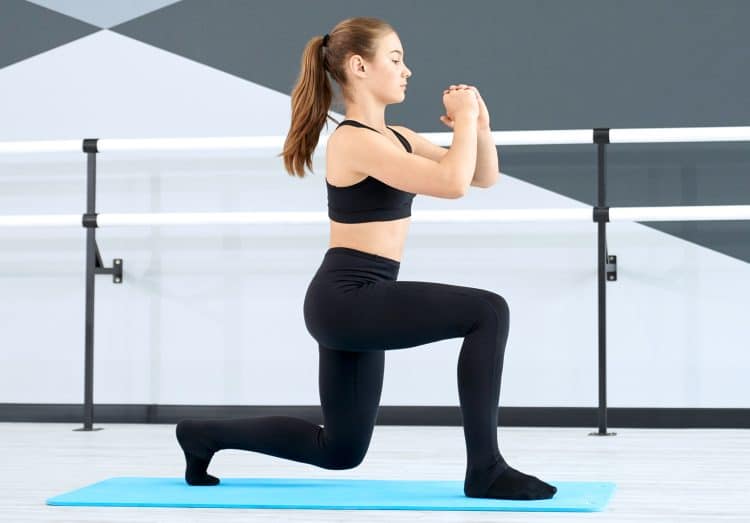
To the uninitiated, squats and lunges seem interchangeable. After all, they use all the same muscles. However, where squats are a bilateral or two-legged exercise, lunges are unilateral and emphasize one leg at a time. Why does this matter? It’s a question of function.
While some human movements happen on two legs, most dynamic activities happen one leg at a time, i.e., walking, running, climbing flights of stairs, etc. As such, if you want to improve your ability to perform these tasks, you need to mirror them in training.
Squat variations tend to allow you to lift more weight, making them good for building strength and muscle mass. But lunges are better for function, which is why most people need both.
The lunge movement pattern is also a great way to identify and fix left-to-right strength imbalances and help develop hip mobility, balance, and coordination.
Effective lunge variations include:
- Forward lunge
- Reverse lunge
- Lateral lunge
- Split squat
- Rear-foot elevated split squat
- Lunge jump
- Step-up
Step-ups might not fit the lunge movement pattern exactly, but it’s actually a good inclusion. After all, it emphasizes one leg at a time and is a very functional movement. In fact, the step-up is essentially a vertical lunge, which is why it’s included on this list.
7. Twist
Target muscles: Core
Core is the collective term for your midsection muscles, including the rectus abdominis, transverse abdominis, obliques, and erector spinae. These muscles contract inward to generate intra-abdominal pressure, which supports your spine when you brace.
The core muscles are indirectly involved in every exercise you perform. However, their involvement is mainly limited to anti-flexion and extension. In other words, they prevent unwanted forward and backward movements.
This means that the only function of your core not addressed by the other movement patterns is rotation or twisting, hence its designation as an essential movement pattern.
The twist category includes rotation and anti-rotation exercises, and you should endeavor to incorporate both into your training schedule. Rotation exercises involve dynamic movement, whereas anti-rotation exercises promote stability.
Level Up Your Fitness: Join our 💪 strong community in Fitness Volt Newsletter. Get daily inspiration, expert-backed workouts, nutrition tips, the latest in strength sports, and the support you need to reach your goals. Subscribe for free!
Good choices of twisting exercises include:
- Cable woodchop
- Pallof press
- Rotational medicine ball throw
- Russian twist
- Windshield wiper
- Oblique crunch
Between them, the Magnificent 7 movement patterns work all your major muscles, with the possible exception of your calves.
However, unless you are a bodybuilder, you probably won’t be overly concerned about the size of your calves, and most cardio activities will provide your lower legs with all the training they need. That said, by all means, add a few sets of standing calf raises if you think you need them.
Sample Magnificent 7 Workouts to Try
The previous section told you all you need to know to create your Magnificent 7 full-body workouts. Just pick one exercise from each movement category and apply your preferred set and rep scheme. Write 2-3 different workouts, incorporating both vertical and horizontal upper body pushes and pulls for balance and variety.
But to save you the bother, we’ve also designed five Magnificent 7 workouts for you to try. Perform them as written or modify them to better suit your needs and goals.
But before you start any of these workouts, make sure you prepare your muscles and joints with an appropriate warm-up. Start with 5-10 minutes of cardio, followed by dynamic mobility and flexibility exercises for all your major muscles and joints.
Finally, do 1-2 light sets of the first leg, push, and pull exercise to get your muscles firing properly and get your head in the game.
Please note that sets/reps/recovery are included for illustration purposes only. Adjust them according to your needs and goals, e.g., 4-6 reps for strength or 18-20 for endurance. Consider 2-4 sets of 8-15 as a placeholder that you can change as required.
Ready? Then let’s get to work!
Magnificent 7 Workout 1 – Machines Only
This workout is ideal for beginners. It’ll build basic strength and endurance without challenging balance and coordination too much. It’s also a good option for older exercisers, as the movements are supportive and require minimal balance. Of course, there is no machine version of the carry movement pattern, hence the inclusion of the dumbbell farmer’s walk.
| # | Exercise | Sets | Reps | Recovery |
| 1 | Leg press | 2-4 | 8-15 | 60-90 seconds |
| 2 | Chest press machine* | 2-4 | 8-15 | 60-90 seconds |
| 3 | Lat pulldown** | 2-4 | 8-15 | 60-90 seconds |
| 4 | Smith machine Romanian deadlift | 2-4 | 8-15 | 60-90 seconds |
| 5 | Dumbbell farmer’s walk | 2-4 | 15-20 yards | 60-90 seconds |
| 6 | Smith machine reverse lunge | 2-4 | 8-15 | 60-90 seconds |
| 7 | Cable Russian twist | 2-4 | 8-15 | 60-90 seconds |
*Alternate with machine shoulder presses workout by workout.
** Alternate with seated cable rows workout by workout.
Magnificent 7 Workout 2 – Bodyweight Only
Workouts are often designed for performing in gyms. However, a growing number of people prefer to exercise at home. This is often more convenient and means you don’t have to waste time commuting to the gym or money on a gym membership.
This bodyweight workout is ideal for home fitness enthusiasts. For the weighted carry, use any heavy object, like the example water jug or a bag of books. Get creative!
| # | Exercise | Sets | Reps | Recovery |
| 1 | Air squat | 2-4 | 8-15 | 60-90 seconds |
| 2 | Push-up* | 2-4 | 8-15 | 60-90 seconds |
| 3 | Pull-up** | 2-4 | 8-15 | 60-90 seconds |
| 4 | Prisoner good morning | 2-4 | 8-15 | 60-90 seconds |
| 5 | Water jug bear hug carry | 2-4 | 15-20 yards | 60-90 seconds |
| 6 | Walking lunge | 2-4 | 8-15 | 60-90 seconds |
| 7 | Seated Russian twist | 2-4 | 8-15 | 60-90 seconds |
*Alternate with pike push-ups workout by workout.
** Alternate with inverted rows workout by workout.
Magnificent 7 Workout 3 – Freeweights Only
This workout utilizes basic free-weight exercises, so it should be suitable for anyone who trains in a very basic facility, such as a garage gym. While pull-ups are not a strictly body weight-only exercise, the addition of an external load means it just about fits the theme of this workout.
| # | Exercise | Sets | Reps | Recovery |
| 1 | Barbell back squat | 2-4 | 8-15 | 60-90 seconds |
| 2 | Dumbbell bench press* | 2-4 | 8-15 | 60-90 seconds |
| 3 | Barbell Pendlay row** | 2-4 | 8-15 | 60-90 seconds |
| 4 | Barbell Romanian deadlift | 2-4 | 8-15 | 60-90 seconds |
| 5 | Zercher walk | 2-4 | 15-20 yards | 60-90 seconds |
| 6 | Dumbbell step-ups | 2-4 | 8-15 | 60-90 seconds |
| 7 | Dumbbell woodchop | 2-4 | 8-15 | 60-90 seconds |
*Alternate with dumbbell overhead presses workout by workout.
** Alternate with weighted pull-ups workout by workout.
Magnificent 7 Workout 4 – Resistance Bands Only
While bodyweight workouts can be effective, they often entail doing lots of reps per set. This is especially true for more experienced exercisers. This workout uses resistance bands to increase the load on your muscles.
However, as bands are so cheap and portable, this is also an excellent workout for people who travel. Again, however, the only way to do a weighted carry is by carrying a weight! So, fill a bag with some books or water bottles, hoist it overhead, and get walking.
| # | Exercise | Sets | Reps | Recovery |
| 1 | Resistance band squat | 2-4 | 8-15 | 60-90 seconds |
| 2 | Resistance band chest press* | 2-4 | 8-15 | 60-90 seconds |
| 3 | Resistance band pulldowns** | 2-4 | 8-15 | 60-90 seconds |
| 4 | Resistance band deadlift | 2-4 | 8-15 | 60-90 seconds |
| 5 | Dumbbell waiter’s walk | 2-4 | 15-20 yards | 60-90 seconds |
| 6 | Resistance band reverse lunge | 2-4 | 8-15 | 60-90 seconds |
| 7 | Resistance band Pallof press | 2-4 | 8-15 | 60-90 seconds |
*Alternate with resistance band shoulder presses workout by workout.
** Alternate with resistance band seated rows workout by workout.
Magnificent 7 Workout 5 – Mixed Modality
Your final workout includes arguably the best exercises for each movement pattern, although our selections are clearly biased! Ultimately, it’s up to you which training modalities you use, and you should always try to use the best tools for your training goals and personal circumstances.
| # | Exercise | Sets | Reps | Recovery |
| 1 | Goblet squat | 2-4 | 8-15 | 60-90 seconds |
| 2 | Parallel bar dip* | 2-4 | 8-15 | 60-90 seconds |
| 3 | Chin-ups** | 2-4 | 8-15 | 60-90 seconds |
| 4 | Kettlebell swing | 2-4 | 8-15 | 60-90 seconds |
| 5 | Trap bar farmer’s walk | 2-4 | 15-20 yards | 60-90 seconds |
| 6 | Dumbbell deficit reverse lunge | 2-4 | 8-15 | 60-90 seconds |
| 7 | Medicine ball rotational throw | 2-4 | 8-15 | 60-90 seconds |
*Alternate with dumbbell shoulder presses workout by workout.
** Alternate with ring rows workout by workout.
Frequently Asked Questions
Do you have any questions about our Magnificent 7 workouts? No problem, because we’ve got the answers! Also, feel free to post additional questions in the comments section below, and we’ll get back to you ASAP.
1. Are full-body workouts better than split routines?
This is like asking whether chicken is better than beef or Coke is better than Pepsi, as there is no obvious answer. Some lifters do better on full-body workouts, while others prefer and thrive with split routines. Your preferences may even change depending on your current circumstances and training goals.
Don’t be one of “those guys” who say that full-body workouts are only suitable for beginners or that all bodybuilders should follow a split routine because that is not always the case.
Ultimately, the best option is the one that works for you. For some people, full-body workouts are the winner, but for others, split routines are optimal. If in doubt, try them both and see which you prefer.
2. Can I incorporate supersets or circuit training into the Magnificent 7 workouts?
While straight sets are the more usual way to organize your workouts, there is nothing stopping you from using supersets or circuit training with these programs. For example, you can do the upper body push and pull exercises as a superset. This will save time and enhance recovery between sets.
Alternatively, you can do the entire Magnificent 7 workout as a circuit. To do this, simply do one set of each exercise in order, rest a moment, and then start back at the top of the program.
This turns your strength training workout into a cardio and conditioning session that’s better for both fat-burning and time-efficiency. So, feel free to adapt the workouts using your favorite training methods. Take this idea and run with it to create your ideal training plan.
3. Are these cutting or bulking workouts?
Contrary to popular opinion, it’s not your workout that determines whether you lose fat (cut) or build muscle (bulk) – it’s your diet. To burn fat and lose weight, you must eat less and create a calorie deficit. This energy shortfall forces your body to burn fat for fuel.
In contrast, you need a calorie surplus to build muscle, which usually entails eating a little more.
Theoretically, you can cut or bulk using any workout provided you adapt your diet to your goals. That said, in this instance, bodybuilding style split routines are generally considered more effective for muscle growth and may be more suitable if you want to gain as much muscle as possible.
However, for typical exercisers, Magnificent 7 workouts should produce noticeable muscle growth.
Read more about bulking vs. cutting here.
4. Why are there no biceps or triceps exercises in these workouts?
While there are no isolation exercises in any Magnificent 7 workouts, that doesn’t mean your biceps and triceps are forgotten. Rather, instead of training them directly, they receive an indirect workout during the upper body pushes and pulls. For many exercisers, this will be enough work to trigger increases in strength and muscle size.
However, if arm size is a priority for you, please feel free to add some additional biceps and triceps exercises to your workouts. Alternatively, you could dedicate a training session to your arms 1-2 times per week if you feel that’s necessary.
5. How can I combine cardio with the Magnificent 7 workouts?
Knowing how to combine cardio and strength training can be hard as they’re so different and may even appear conflicting. That’s especially true for hardcore bodybuilding and powerlifting training.
However, for general fitness and health, cardio and strength training go together like peanut butter and jelly and are definitely compatible.
Ways to combine cardio and your Magnificent 7 workouts include:
- Do 20-30 minutes of cardio after your strength workout.
- Add a 10 to 15-minute finisher, e.g., HIIT, to the end of your strength workouts.
- Do 30-40 minutes of cardio on the days in between your strength workouts.
- Turn your Magnificent 7 workout into a circuit to develop cardio fitness and strength simultaneously.
With several options to choose from, you should have no problem incorporating cardio with Magnificent 7 strength training workouts.
6. Are the Magnificent 7 workouts suitable for all levels and genders?
The Magnificent 7 is less of a workout and more of a way to organize your training and create balanced, functional, full-body training programs. As such, it’s suitable for all levels and genders.
Beginners can include more machines and straightforward exercises in their Magnificent 7 workouts. In contrast, more experienced exercisers can use more challenging movements and do more sets.
Ultimately, you can modify this training method to suit most levels and fitness goals. However, bodybuilders and powerlifters will probably need to adopt a more activity-specific training plan. The Magnificent 7 template is best for general exercisers, athletes, and anyone else who needs to develop all-around basic strength and conditioning.
7. Is this the only or best way to create full-body workouts?
Contrary to what you may have heard, there is no one-size-fits-all workout format that’s perfect for everyone. We’re all individuals and, as such, have our own unique preferences and fitness goals. As such, while this is an excellent way to organize the exercises in your full-body workouts, it’s not the only way.
With that in mind, feel free to explore other ways of creating full-body workouts. Give the Magnificent 7 a try, but don’t feel you have to stick to it if it’s not right for you. Learn from your experiences so you can create programs that match your needs and goals.
Closing Thoughts
While many personal trainers and strength coaches prescribe split routines to their clients, I’ve always preferred full-body workouts. In my experience, for anyone other than bodybuilders and powerlifters, full-body workouts are effective and time-efficient, and missing a workout won’t derail your entire training week.
On the downside, training your entire body in a single session can be tiring, which is probably why many exercisers prefer split routines. However, that tiredness suggests (to me at least) that you need to work on your fitness and conditioning, which, of course, full-body workouts can help improve.
The Magnificent 7 template is a great way to organize your full-body workouts. It’s not necessarily the best, as no such thing exists, but it’s very effective and comes highly recommended. And while I can’t take credit for inventing it, I’ve used it enough over the years to confirm it really does work.
So, try one of our Magnificent 7 workouts or create your own. I think they’re awesome, and I think you will, too!
References:
- Bartolomei S, Nigro F, Malagoli Lanzoni I, Masina F, Di Michele R, Hoffman JR. A Comparison Between Total Body and Split Routine Resistance Training Programs in Trained Men. J Strength Cond Res. 2021 Jun 1;35(6):1520-1526. doi: 10.1519/JSC.0000000000003573. PMID: 32168178.
- Marchetti PH, Jarbas da Silva J, Jon Schoenfeld B, Nardi PS, Pecoraro SL, D’Andréa Greve JM, Hartigan E. Muscle Activation Differs between Three Different Knee Joint-Angle Positions during a Maximal Isometric Back Squat Exercise. J Sports Med (Hindawi Publ Corp). 2016;2016:3846123. doi: 10.1155/2016/3846123. Epub 2016 Jul 18. PMID: 27504484; PMCID: PMC4967668.

